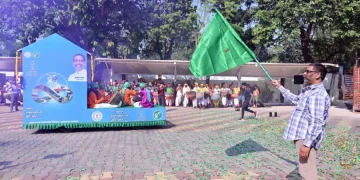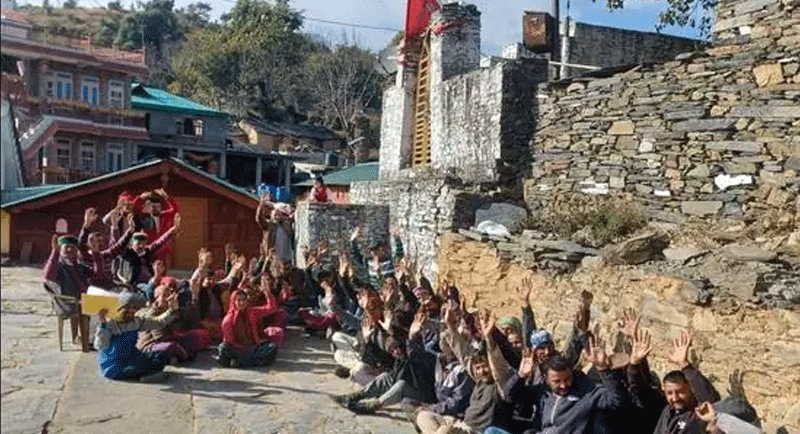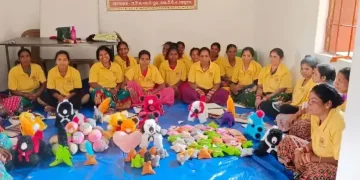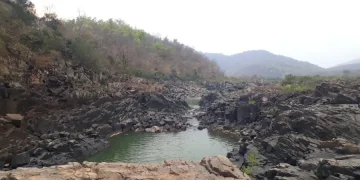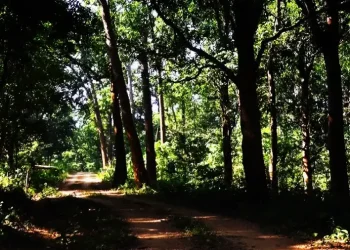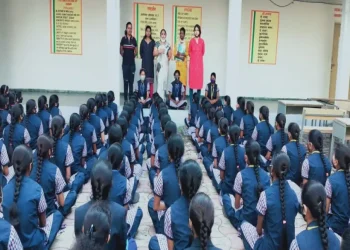Indian Tribal News Service
New Delhi
The Union Ministry of Tribal Affairs (MoTA) has clarified that the Jai Ram Thakur government’s proposal to notify Trans-Giri region in Sirmaur district as a Scheduled Area and grant Scheduled Tribe status to the Hatti community living there could not be considered for want of criteria.
Replying to a question by Mandi MP Pratibha Singh, MoTA clarified that the State government had submitted a proposal to notify the area as Scheduled Area (SA) in Himachal Pradesh and it was duly examined.
“For such a declaration, the criteria are preponderance of tribal population, compactness and the reasonable size of the area, a viable administrative entity such as a district, block or taluk and economic backwardness of the area as compared to the neighbouring areas. Since the state government’s proposal was not in the current form, it could not be considered,” the the reply said.
The provision of Article 244 of the Constitution enables the designation of certain areas as Scheduled and Tribal Areas. The Constitution provides for two types of areas, areas designated as “Schedules Areas” in terms of Fifth Schedule of the Constitution and areas designated as “Tribal Areas” in terms of the Sixth Schedule of the Constitution.
The Ministry said that according to the Constitutional provision of the Fifth Schedule under Article 244(I) of the Constitution, the expression “Schedules Areas” means such areas as the President may by order declare to be Scheduled Areas. The specification of a Scheduled Area or modification of an existing SA is done after consultation with the Governor of that state and through notification issued with the approval of the President.
MoTA also clarified that the Jaunsar Bawar area of Uttarakhand had not been notified as SA neither under Article 244(I) of the Fifth Schedule of the Constitution, nor the Tribal Area under Article 244(2) of the Sixth Schedule of the Constitution.
The Kendriya Hatti Samiti, however, is optimistic that the community in the Trans-Giri area of Sirmaur will get the tribal status. Though the Union Government has rejected the state’s government’s proposal of 2016, the Samiti leaders say a fresh exercise is underway in this regard.
The state government has been pursuing the case since 2016. The Tran-Giri area was part of the erstwhile the Jaunsar Bawar area of Uttarakhand and both areas were part of the royal Sirmaur state. Though Hattee leaders had been claiming that the Jaunsar Bawar area had been granted the tribal status, the ministry’s reply clarified that no such notification had been issued.
Only Kinnaur enjoys the ST status in Himachal. The tribal status to the area requires a constitutional amendment. Over 3 lakh people of 144 panchayats of the area would have benefited from this status.
The BJP leaders, who had promised this status to the Hattee community in the run-up to the last Assembly elections, are in an awkward situation. The issue is likely be a major plank in the next Assembly poll.
Himachal Pradesh Chief Minister Jai Ram Thakur had recently met Union Home Minister Amit Shah in New Delhi seeking a Schedule Area tag for the Trans-Giri region and an ST status for the 3 lakh-strong Hatti community residing there.
The Himachal Pradesh government sent an ethnographical proposal to MoTA in this regard.
The demand is nothing new. It had started way back in 1967 when Jaunsar-Bawar areas of Uttarakhand, which share boundaries with the Trans-Giri area, were granted the Scheduled Area status.
The Trans-Giri area of Sirmaur district was part of the erstwhile Jaunsar Bawar area of Uttarakhand, where the Hatti community was granted the ST status way back in 1967. Both areas were part of the royal erstwhile Sirmaur state though Jaunsar Bawar area separated in 1815. Age-old traditions such as animal sacrifice make the Hatti a distinct community with modernisation yet to sink in.
The Government of Himachal Pradesh first sent a proposal in May, 2005 to MoTA seeking the status.However, the Government of India in 1999 and the in 2002 clearly laid down the modalities for deciding the claims for inclusion in, exclusion from and other modifications in orders specifying Scheduled Castes and Scheduled Tribes lists.
As per the modalities, only those proposals which have been recommended and justified by the concerned State Government/UT Administration and concurred with by Registrar General of India (RGI) and National Commission for Scheduled Tribes (NCST) are to be considered and the legislation subsequently amended.
Accordingly, the proposal was processed and rejected as per these modalities and it was conveyed to the Himachal Pradesh government by MoTA in March 2017.
However, the Himachal Pradesh government in 2018 again requested to reconsider the already rejected proposal. But the existing criteria for declaring any area as ‘Scheduled Area’ under the fifth schedule are: (i) Preponderance of tribal population, (ii) Compactness and reasonable size of the area (iii) A viable administrative entity such as a district, block or taluk, and (iv) Economic backwardness of the areas as compared to the neighboring areas, the MoTA maintained giving little hope to the community.







